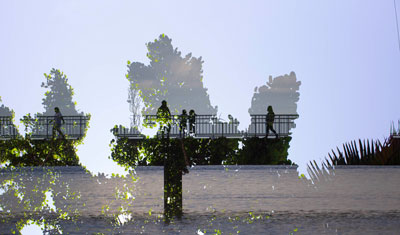
Adobe Photoshop heavily relies on conceptualizing image designing through structured layers; an understanding thereof warrants efficient photo-editing outcomes. This vital feature allows one manifold means towards adjusting precision, application of effects, and flexibility in the entire composition. Let’s examine the technical aspects of utilization:
Photoshop layers can be meticulously described as emulating a transparent tier that overlies another one vis-a-vis. Each layer features such aspects as text, shapes, adjustments, filters, or graphic elements personalized per need. An intricate system of separating and prioritizing design priorities offers an opportunity for detailed layer-by-layer simulations.
Essential to Photoshop is editing non-destructively via layers; this means it remains uncompromised throughout the editing maneuvering process enabling further modification freely where necessary.
Isolating image details within different layers provides precise editing outcomes. If brightness adjustment requires relevance within only some parts without altering the entire composition positively or negatively as an example; layers make it possible to achieve such optimization on specific aspects.
Photoshop systems present countless adjustment options by using the layered approach that influences underlying content features affecting openness or transparency. The endless chain includes Curves, Levels, and Hue/Saturation among other beneficial techniques in fine-tuning factors like color contrast, and exposures leading towards effortless modifications in the future, all without compromising original content.
Transparency governing both blending modes and Opacity; each layer could advantageously coexist with specified content affecting overall appearance at large with clear-cut precision. Photoshop through its beneficial use ranging from naming schemes to regulation could also steer structured workflows permitting optimal processing priorities while staying relevant. Even if you’re not already familiar with “Layers”, incorporating them exposes you to endless possibilities when working on complex compositions in Photoshop.
By adding new layers, numerous images, texts, and graphics get collaged into one creating the expected result thereby making manipulation easier. Each composition is handled independently, enabling greater control over every element incorporated.
Here are some easy steps to use when working with ‘Layers’ in Photoshop:
Creating new Layers: By clicking the “New Layer” button or simply using Ctrl/Cmd+Shift+N shortcut keys, you can Create new Layers quickly! Additionally, duplicating existing layers might be another option. Layers imported from separate files can also act as separate additional ones too!
Sequence/ordering of Layers: The proper stack/sequence ordering guarantees a desirable final image. Look out for this while dragging and dropping your every Layer into appropriate positions within the respective Layers’ menu
Editing singular Layers: Adjust each independent entity easily without harming others. Select any single one from the listed entities within your ‘Layers’ window customizing individually using filters, and transformations among others.
Blending modes and Opacity: Each Layer interacts with the ones beneath it so modifying their blending modes or opacity provides you fine control over layer interaction. A range of options exist thus keep experimenting!
Layer Styles and Effects: Customize your Layers further by adding layer effects ranging from drop shadow to bevel. Photoshop offers unique ‘Layer Styles’ which can produce surprising/new outcomes through continual experimentation.
When working on complex projects it’s important to keep things organized.
You can group related layers together in Photoshop by selecting them and pressing Ctrl/Cmd+G or by right-clicking and choosing “Group from Layers.” This makes it easier to navigate the workspace.
Layer masks are another useful tool for controlling the visibility of specific parts of a layer. By using a layer mask.
You can hide or reveal portions of a layer without altering the pixels themselves. This technique allows for non-destructive editing and gives you more flexibility to adjust or refine the mask later on.
Opacity and Fill settings also come in handy when trying to control the transparency and blending of layers. While opacity controls transparency as a whole fill allows you to adjust transparency specifically without affecting layer styles or blending modes. Smart Objects are layers that allow you to preserve the original content of an embedded image or object while still being able to resize, transform, or edit non-destructively.
They’re especially useful when working with multiple instances of the same object or applying filters that may need modifying later on.
Layer effects, filters, adjustments, linking – there are plenty of ways Photoshop allows you to enhance or modify specific layers in your project. It really comes down to which tools will best suit your needs as an editor.
Remember though – keeping things organized is key! The Importance of Layer Organization and Naming in Adobe Photoshop: Efficiency is key when working on projects that require detailed photo editing or graphic design. Assigning meaningful labels to layers in a logical manner significantly enhances workflow by allowing easy navigation within complex compositions; preventing errors during modifications, which can be detrimental to the project at hand. Working with Adobe Photoshop’s layer feature allows for precision editing that maintains flexibility, formulating complex edits with minimal impact on original images through non-destructive edits.
Control is crucial in graphic design; having access to specific elements through proper layer organization ensures efficient workflow management that is essential.
Be First to Comment